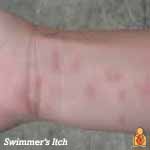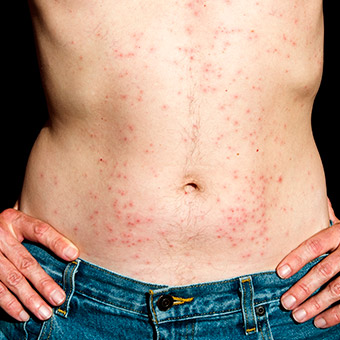

Skin sensitivity is typically treated by washing the affected area with clean. Treatments may include moisturizers, lotions, baths, cortisone creams that relieve swelling, and antihistamines, which relieve itching. Any time you suspect a severe allergic reaction seek immediate emergency care. If it is a bad rash, if it does not go away, or if you have other symptoms, you should see your health care provider. Although most rashes clear up fairly quickly, others are long-lasting and need long-term treatment.īecause rashes can be caused by many different things, it's important to figure out what kind you have before you treat it. You get the rash where you have touched an irritant, such as a chemical, or something you are allergic to, like poison ivy. It causes redness, itching, and sometimes small bumps. Medically known as cercarial dermatitis, swimmers itch is caused by a parasite born in the water that attached to the outermost layer of skin. Certain genes can make people more likely to get rashes.Ĭontact dermatitis is a common type of rash. Other causes include irritating substances and allergies. If you have a rash you can try the following for relief: Corticosteroid cream. Rashes are a symptom of many different medical problems. Most cases of Swimmer’s Itch do not require medical attention. Some rashes can also lead to blisters or patches of raw skin. Many rashes are itchy, red, painful, and irritated. Swimmer’s itch is a person’s allergic reaction to the cercarial parasite with symptoms that include tingling, burning or itching of the skin, small reddish pimples and small blisters.

In severe cases oral corticosteroids (prednisone) may be prescribed. An antihistamine may be taken by mouth or corticosteroids, such as hydrocortisone, may be applied to the skin to help control the itching. Other bacteira reported to cause the reaction include Bilharziella polonica and Schistosoma bovis. Mild cases may be treated with cool compresses or bathing with colloidal oatmeal to help soothe the rash.

Pour 1 teaspoon (about 5 milliliters) of the solution into each ear and let it drain back out. However, swimmer’s itch can also be caused by schistosome parasites of non-avian vertebrates, such as Schistosomatium douthitti, which infects snails and rodents. What helps itching from swimmers ear A mixture of 1 part white vinegar to 1 part rubbing alcohol may help promote drying and prevent the growth of bacteria and fungi that can cause swimmers ear. A rash is an area of irritated or swollen skin. The schistosomatidae genera most commonly associated with swimmer’s itch in humans are Trichobilharzia and Gigantobilharzia.


 0 kommentar(er)
0 kommentar(er)
